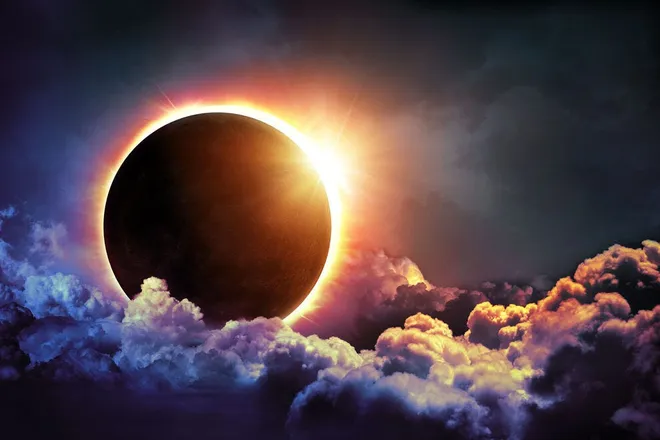When the skies darkened over the United States in August 2017 during a total solar eclipse, it wasn’t just a celestial phenomenon but a cultural tapestry being woven across communities. Among those caught in this interstellar dance was Jenée Chizick-Agüero, a pregnant publisher with a keen eye for science and a heart set on witnessing the eclipse. Yet, her anticipation was met with a familial caution rooted deeply in Costa Rican cultural beliefs, highlighting a fascinating clash between tradition and modernity.
A Pregnant Pause: Tradition Meets Eclipse
In anticipation of the eclipse, Chizick-Agüero, despite her enthusiasm, faced opposition from her husband Jorge Arturo Agüero and his Costa Rican family. Echoing a long-held belief, they cautioned against her viewing the eclipse, fearing it might harm their unborn child. This belief wasn’t unfounded in their culture, as Jorge’s mother herself had donned black clothing during a 1991 eclipse to protect her then-unborn child. It’s a poignant example of how deep-seated traditions can influence perceptions and actions even in the face of scientific understanding.
Cultural Beliefs Spanning Continents
Chizick-Agüero’s compromise—attending the viewing party with a friend and a black sweatshirt tied around her belly—was a nod to her husband’s cultural concerns. It’s a vivid illustration of how traditions, such as those held by people in Costa Rica and beyond, permeate life’s moments, even those as scientifically explained as a solar eclipse.
Mayan Legends and Modern Observations
The eclipse myths aren’t confined to Costa Rica. In Honduras, for instance, legends inspired by Mayan beliefs suggest that eclipses can influence crop vitality and bestow unborn children with supernatural abilities. These narratives, rich in imagery and symbolism, showcase the diverse tapestry of human belief and the ways in which celestial events are woven into the cultural fabric.
Indigenous Views on Celestial Events
In the United States, Indigenous peoples hold eclipses in a sacred light, with various tribes ascribing spiritual significance to the alignment of celestial bodies. The Navajo Nation, for example, observes eclipses with solemn reverence, focusing on prayer and introspection. These practices underscore a holistic view of the universe, where cosmic events are seen as part of a larger, interconnected cycle of life and renewal.
A Global Gaze: Eclipses Through the Ages
The fascination with eclipses transcends cultures, from the Navajo Nation’s spiritual practices to the Cherokee’s myth of a giant frog attempting to swallow the sun. These stories, while differing in characters and outcomes, share a common theme: the profound impact of natural phenomena on human belief and behavior.
The Science of Shadows
Amidst these rich cultural narratives, the 2017 eclipse also offered a moment of communal scientific engagement. Astronomers and educators seized the opportunity to demystify the event, connecting people with the wonders of the cosmos. The Franklin Institute’s Derrick Pitts and others played pivotal roles in transforming a moment of darkness into a beacon of learning and curiosity.
Astrology and the Art of Eclipse Interpretation
The eclipse’s timing, coinciding with Mercury in retrograde and the astrological sign of Aries, infused the event with additional layers of meaning for those inclined towards astrology. This alignment of celestial and astrological phenomena prompted reflections on change, caution, and communication, further enriching the eclipse’s tapestry of interpretations.
Observing Nature’s Respondents
The eclipse’s impact extended beyond human observers to the animal kingdom, prompting scientific curiosity about the behaviors of birds, insects, and other wildlife. This interest in the natural world’s reaction to the eclipse underscores the event’s ability to bridge the gap between cultural myths and scientific inquiry, fostering a holistic appreciation of nature’s interconnectedness.
A Tapestry of Beliefs and Wonders
The 2017 total solar eclipse was more than just a momentary dimming of the sun; it was a mosaic of cultural beliefs, scientific exploration, and communal experience. From the familial traditions of Costa Rica to the sacred observances of Indigenous tribes and the curious eyes of modern science, the eclipse served as a reminder of the myriad ways humans engage with the universe’s mysteries.
As we look towards future celestial events, the 2017 eclipse remains a profound reminder of the beauty found in the confluence of science and tradition, myth and observation, fostering a deeper understanding of our place within the cosmos and the beliefs that guide us.

